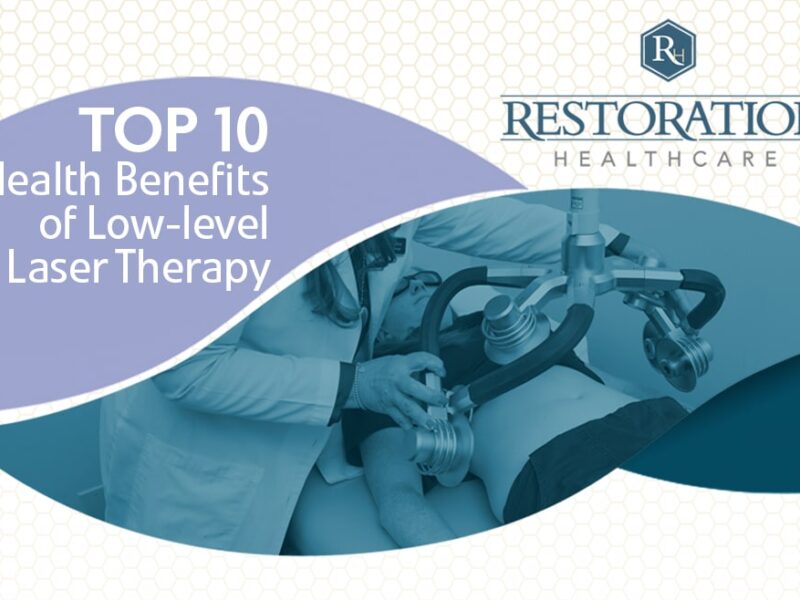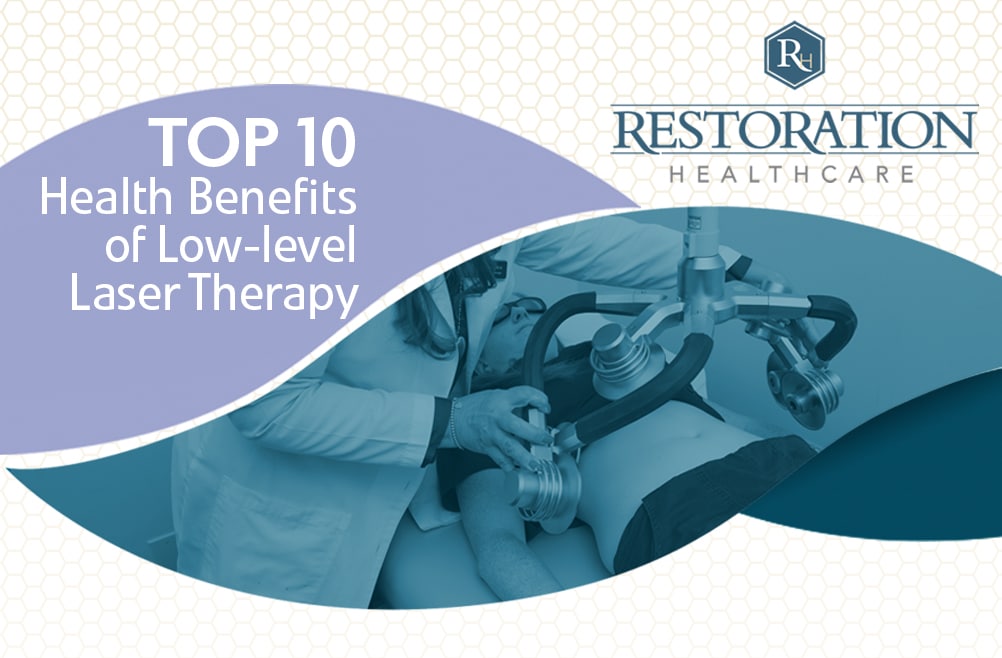Top 10 Health Benefits of Low-level Laser Therapy

If you recently received one of our Zerona-focused emails — or if you read something online about low-level laser light technology — you may be wondering about the health benefits of cold-laser technology.
Low-level laser therapy (LLLT), also known as cold laser therapy or photobiomodulation (PBM) therapy, is a non-invasive, low-intensity light therapy that has been approved by the U.S. Food & Drug Administration (FDA) to stimulate healing. In contrast to standard lasers often used in surgery to apply intense heat to make incisions, the light intensity in LLLT is too low to heat the body’s tissues.
Specifically, the application of red and near infra-red light over injuries or lesions may improve wound and soft tissue healing, reduce inflammation, and relieve acute and chronic pain, especially musculoskeletal pain. Low-level laser therapy is also FDA approved as an alternative to liposuction for fat reduction and is now available at our office in Irvine through the use of our in-house Zerona Z6 Laser.
Potential Benefits of Low-Level Laser Therapy
Clinical trials and studies of low-level laser therapy suggest many beneficial effects, including:
1. Supports detoxification and removes fat that may stimulate weight loss: Low-level laser therapy liquifies the fatty content contained in fat cells and disrupts the membranes of these cells, inducing the formation of transitory pores that enable the liquified fat to seep out of the cells into spaces where the lymphatic system can begin to flush it from the body.
Here at Restoration Healthcare — an Irvine Functional Medicine practice — we use low-level laser therapy as part of a medically supervised detox, fat-reduction, and/or weight-loss protocol to reset the body’s metabolism for long-term health-related benefits. (For additional details, please read our previous post “Laser Fat Loss: Zerona Z6 Laser Delivers a Paleo Solution.”)
2. Alleviates pain (analgesic): Low-level laser therapy alleviates pain in the following ways:
- Partially blocks pain signals from nerves to the brain
- Decreases nerve sensitivity
- Reduces inflammation (see No. 3 below)
- Stimulates the production of high levels of pain-killing chemicals including endorphins, enkephalins, and opioids in the brain and adrenal glands
- Stimulates muscle trigger points and acupuncture points non-invasively to relax contracted muscle fibers
3. Reduces inflammation: Low-level laser therapy dilates blood vessels and activates the lymphatic system to drain swollen areas that are the result of trauma or inflammation.
4. Accelerates cell growth and tissue repair: Low-intensity light penetrates deep into tissues to accelerate cell reproduction and growth and increase energy availability to cells. It enhances cell metabolism by increasing adenosine triphosphate (ADP) production, which improves cell nutrition and waste elimination, which is especially effective in repairing tendons, ligaments, and muscles. It also stimulates fibroblast development in damaged tissue (fibroblasts are the building blocks of collage, the essential protein required to replace old tissue or repair tissue injuries), making LLLT especially helpful in treating burns and open wounds.
5. Enhances vascular activity: Low-level laser therapy speeds the healing process, closes wounds more quickly, and reduces scarring in two ways:
- Significantly increases the formation of new capillaries in damaged tissue
- Dilates blood vessels (increases their diameter), thereby improving the flow of blood to damaged tissues
6. Increases metabolic activity: Low-level laser therapy stimulates higher outputs of specific pro-healing enzymes in blood cells, along with improved oxygen and nutrient delivery.
7. Reduces formation of scar tissue: Low-level laser therapy reduces the formation of fibrous (scar) tissue from cuts, scratches, burns, or surgery.
8. Enhances nerve regeneration and function: Low-level laser therapy speeds up the process of axonal regeneration and nerve cell reconnection.
9. Supports immune system function: Low-level laser therapy directly affects immune function by stimulating the production of immunoglobulins and lymphocytes and by improving the ease of penetration of white blood cells into damaged tissue.
10. Reduces reliance on medications: Low-level laser therapy is considered a safe, natural, and effective alternative therapy that may help reduce or eliminate the need for opioids and other analgesics, anti-inflammatories, and other medications that may have undesirable side effects.
Low Level Laser Therapy Uses
Low-level laser therapy has a wide range of applications, including the following:
- Detoxification, fat loss, and weight management: When used as a complimentary element of an integrative plan of care, low-level laser therapy — like the protocol now available here at Restoration Healthcare — may aid the body in eliminating excess fat that could be contributing to dysfunction or chronic illness.
As an added bonus, our in-house LLLT tool — the Zerona Z6 Laser — interacts with fat cells, resulting in liquifying fatty content contained within the cells, which aids in the detoxification process.
- Musculoskeletal injuries and pain: Sprains (muscles and ligaments), tendonitis, bursitis, tennis elbow, neck pain, lower back pain, knee pain, muscle spasms, joint swelling.
- Inflammation: Inflamed gums, carpal tunnel syndrome, and inflammation caused by autoimmune conditions (such as rheumatoid arthritis and fibromyalgia).
- Skin rejuvenation: Acne, psoriasis, burns, vitiligo, dermatitis, rashes, edema (swelling).
- Wound healing: For wounds that resist treatment, such as those related to diabetes.
- Acupuncture: For patients who are uncomfortable with needles.
Low-level laser therapy should not be used on carcinomas or cancerous lesions and should be avoided in at-home use for treatment of the thyroid gland or eyes. Because its effect on unborn children is unknown, we recommend pregnant women avoid low-level laser therapy.
If you think you may benefit from low-level laser therapy, we encourage you to contact our Patient Service Specialist, Erin Sundberg, at (949) 535-2322, ext. 1, or email Erin at erinsundberg at rhealthc dot com.


